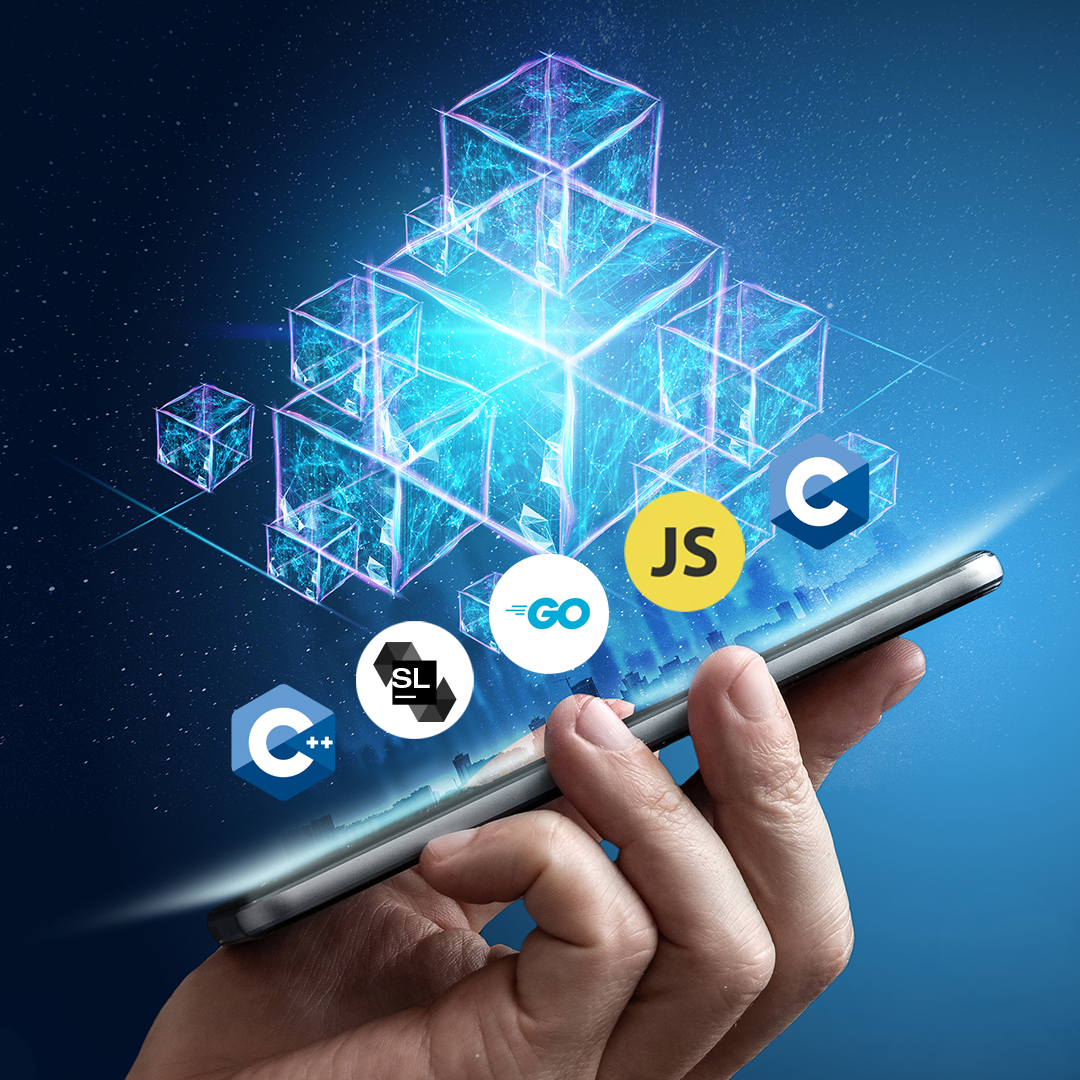Blockchain Programming for Dummies: A Cheat Sheet for 2023
You may have heard the term 'blockchain' when it enabled Bitcoin, Dogecoin, and other cryptocurrencies. However, blockchain's inherent security qualities empower countless other innovations beyond cryptocurrency. It is a database of details about every Bitcoin transaction, cryptographically secured.
Financial corporations have already spent approximately $552 million on projects powered by blockchain. So, the tech demand is likely only to increase.
If you're new to the blockchain programming world, learning it could be overwhelming. This article is all about blockchain programming for beginners in 2023. You will aslo get an overview of the top blockchain programming languages. So let's get to it right away!
Fundamental blocks of blockchain
When you begin understanding any technology, you must start with the basics.
When we talk about blockchain, it’s a secure, public ledger recording every transaction on the network. It is the underlying technology for all cryptocurrencies. Blockchains also update at regular intervals, confirming transactions. Once a transaction is listed and confirmed, it’s impossible to modify it.
Blockchain's secure and robust behavior is likely to disrupt all industries across the globe in the coming years. So when it comes to learning it, you need to brush up on the basic jargon used in the industry. Especially blockchain programming for beginners must begin the journey with the following terminologies:
Blocks
Blocks are data consisting of multiple transactions on the blockchain network over some time.
Chain
A chain is a cryptographic link that keeps the blocks together with a ‘hash
Function.
Peer-to-peer network
In the blockchain network, each node serves as a client and a server, holding identical copies of the application state.

Cryptography
It’s a use of public key cryptography and cryptographic hash functions that are used for data privacy and transparency.
Blockchain
A blockchain, as mentioned earlier, is simply a secure network that records every transaction chronologically on the web. It's a chain of data blocks comprising information understandable to an ordinary man.
Bitcoin
Bitcoin is a peer-to-peer electronic cash system enabling people to spend it directly without going to a financial institution. You can easily buy bitcoin from a bitcoin platform.
How to buy bitcoin?
If you've been wondering how to buy BTC, Moonpay is the right place. You can buy it instantly with a debit, credit card, or e-wallet. Whether you want to buy it in bulk or for as little as a few dollars, you can easily do so from such platforms.
Coin
A coin's primary role is to enable product and service transactions. So it acts like money, a means of payment.
Token
It is a mode of payment but with an extra layer of functionality.
Cryptocurrencies
These digital currencies, such as bitcoin, Ethereum, etc., are built by blockchain technology.
DApps
These are decentralized applications. They're applications such as blockchain, bitcoin, etc., that are built on a decentralized blockchain.
Hash
When the result of applying an algorithmic function to data to convert them into a random string of numbers and letters, it acts as a digital fingerprint of that data. A hash enables data to be locked in place within the blockchain network.
Digital signature
This digital code is created by public key encryption attached to an electronically transmitted document. A digital signature is essential since it verifies the sender's identity.
Private key
It’s a string of data that enables access to the tokens in a wallet. They are passwords kept hidden from anyone but the owner of the address.
Public address
The public address is a cryptographic hash of a public key that acts as an email address that can be published anywhere.
Game theory
Game theory enables cryptocurrencies like Bitcoin to manage and divert disruptions to the network. It ensures the reliability of distributed databases. This is why virtual reality is in demand. It's equipped with cryptocurrency and blockchain, serving the gaming industry right.
Proof of work
A consensus distribution algorithm requires an active role in the mining data block. So, the more work you do, the more coins you’re rewarded with.
Proof of stake
It’s a consensus distribution algorithm, rewarding earrings depending on the number of coins you hold. So, the more you invest in the coins, the more you gain with mining the protocol.
Node
A node is simply a copy of the ledger operated by the blockchain participant.
Now that you know a little about the basic blocks of blockchain, let’s take a step further and understand the basics of blockchain programming.
Top 4 primary blockchain programming languages
Blockchain programming for dummies is a cakewalk since the technology supports many programming languages.
One can quickly achieve security, performance, and resource management through several programming languages.
Once you know about programming languages, choosing the right language becomes more effortless.
Let’s take a look at them.

1. C or C++
C and C++, both programming languages, are easy to learn. C is a process-oriented language, while C++ is object-oriented. In C++, data and functions are wrapped in a set called objects. So, if you create one object, it could easily be called and reused repeatedly in the entire program, eventually reducing coding time.
A few benefits of using C++ over C are as follows:
- It enables templates to create generic classes and functions, making writing reusable and flexible code easier.
- It allows for more memory management and dynamic memory allocation and deallocation.
- It has a solid library that includes various useful data structures, algorithms, and functions.
- It allows the usage of classes, objects, and other OOP (Object Oriented Programming) concepts.
- It offers stronger type checking so that errors are caught faster run time.
While the language has its cons, it’s still an appropriate choice given the control and eases it offers to the developers.
2. JavaScript
JavaScript (JS) is originally used to create front-ends with PHP. However, that is not all spheres the language applies to, given the rapid pace of development. It’s now increasingly used for several blockchain projects. JS consists of vast community support that offers easy interaction with blockchain security tools, helping check the decentralized apps for security breaches and vulnerabilities.
Below mentioned are a few blockchain tools that support JS:
- Metamask
- Swarm
- Web3.js
- IPFS
Light wallet, Gekko, etc., are a few examples of javascript implementation on the blockchain. Since JS applies to the blockchain, research and begin programming. You'll quickly grasp the newer concepts if you’re familiar with this language.
3. Golang
Go is a programming language that is easy to code and offers efficient execution.
Go is one of the newest programming languages, born out of frustration with existing languages. Languages like C and C++, and Java do offer efficient execution. However, not all of these are easy to code. So, to combine ease of code, efficient execution, and computation. Go was born. It’s an attempt to combine the ease of programming of a dynamic language with the safety of a statically typed, compiled language.
A few benefits of using this language for blockchain are:
- It is modern and supports multi-core computing
Working with Go is faster than existing programming languages - It has an expressive but lightweight type system
It has a relatively small number of quirks to remember after coming back to it after a pause - It doesn’t break language specifications with new updates or minor versions.
- These benefits make Go perfect for a blockchain project.
4. Solidity
Solidity is a contract-oriented high-level programming language used to write smart contracts. It’s primarily used to implement smart contracts on several blockchain platforms. The platform is similar to JavaScript, making learning easy for those familiar with JS. Solidity verifies and enforces the constraints at compile-time rather than run-time. It develops and executes code on the Ethereum Virtual machine.
A few reasons you should use Solidity are:
- It is easy to use as it provides a simple and straightforward syntax that's easy to understand.
- it's similar to existing programming languages such as JavaScript, C++, which makes it easier for developers to learn.
- It is less prone to errors and security vulnerabilities.
- It's used to create decentralized applications (DApps) which run on the Ethereum network.
Statistically, more than 4000 developers are actively using Solidity monthly for Ethereum Blockchain development. Once you know all existing programming languages, the decision of choosing the right one lies on you.
Blockchain tools to use
After choosing the programming language and blockchain program, you can choose any of the following tools:
- Truffle
- Remix
- Web3.js
- Ganache
- MetaMask
- Solidity compiler
- Remixd
It’s time to dive into blockchain programming
For any of you trying to dig into the blockchain world, this article could help you at least begin to take that first leap. Since blockchain is a broad umbrella, these few tips will guide you in the right direction. Once you learn the basics, it’s time to choose a program and a programming language and start coding.
While these tips will help you feel less overwhelmed when learning blockchain technology, you will surely encounter certain challenges. So, start with small projects and slowly work your way up to more complex ones, and you’ll be ready.
Last but not least, is to stay curious and challenge yourself!
Are you already thinking about a blockchain project idea, and are worried about building the right team? You need efficient software development professionals with the right programming knowledge and skills ranging from cryptography to smart contracts to web development. Discuss your project idea with us.



It provides clear explanations and practical examples, allowing readers to grasp the foundational concepts and begin their journey into the world of blockchain programming.